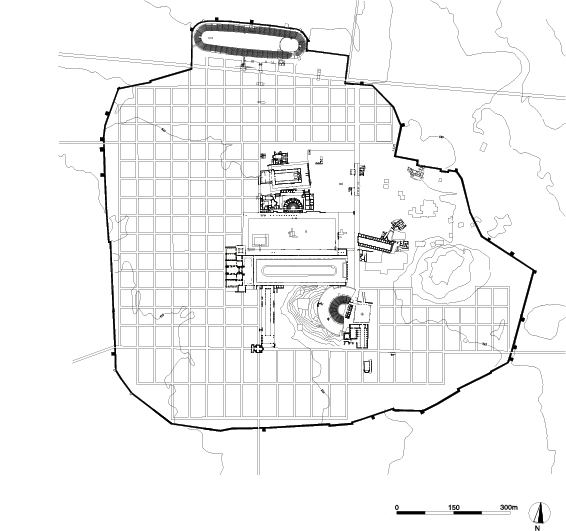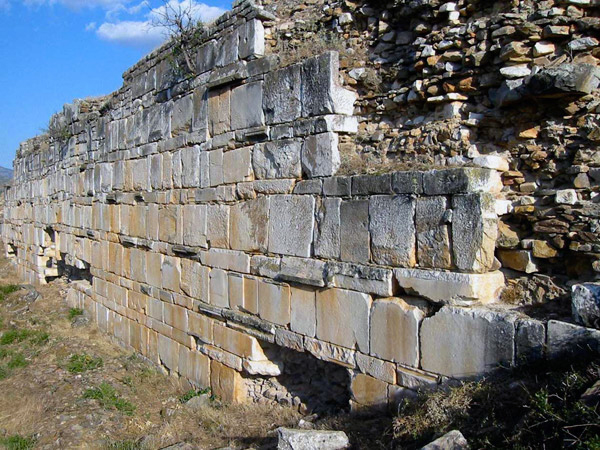City Walls
The city wall of Aphrodisias is extensive, well preserved, and securely dated. The wall is approximately 3.50 km long, enclosing an area of about 72 hectares. It was at least 10.0 m high, and 2.50 to 3.50 m thick. Inscriptions on two of the gates name the governors who paid for their construction and thereby give a date of the 350s or 360s AD. Before this time, Aphrodisias seems to have been entirely unfortified. The construction of the walls would have radically changed both the image of the city, and traffic patterns in and out of town (only seven gates are known). The interior face of the wall is built of regularly coursed, mortared, sub-ashlar masonry, while the exterior face consists almost entirely of large re-used marble blocks, carefully arranged so as to give the appearance of a megalithic marble wall. Most of these re-used blocks came from monumental tombs near which the wall passed. The cemeteries were thus extensively pillaged for the construction of the wall, which was an event of great significance, a caesura in the social and topographical history of Aphrodisias.







